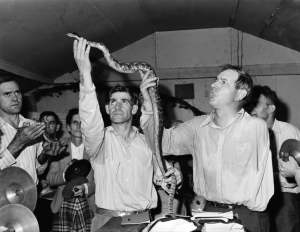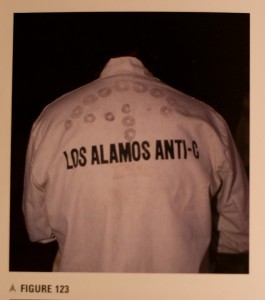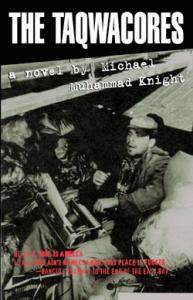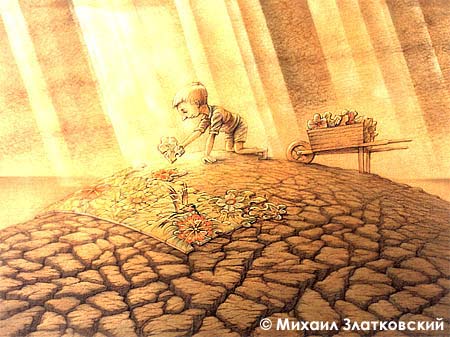The Appalachian Snake Handlers
 What happens when a preacher discovers a passage in the Bible that so affects him, that he spends the rest of his life spreading its message. Dedicates his passion and time to these couple of sentences. Commits to its words so fervently that by the time of his death, a widespread group of followers believe so strongly in the text that they would risk their lives to continue in its practice.
What happens when a preacher discovers a passage in the Bible that so affects him, that he spends the rest of his life spreading its message. Dedicates his passion and time to these couple of sentences. Commits to its words so fervently that by the time of his death, a widespread group of followers believe so strongly in the text that they would risk their lives to continue in its practice.
We’re talking, of course, about George Went Hensley and the serpent handlers of Appalachia. This group of folks, diffuse mostly among the Southeastern US, read literally into a passage from Mark 16:17-18. In following the words, practitioners handle deadly snakes and take swigs of water poisoned with strychnine, a bitter chemical used as a pesticide. If bitten by a snake, believers aren’t allowed to see a doctor. The Bible text reads:
And these signs shall follow them that believe: In my name shall they cast out devils; they shall speak with new tongues. They shall take up serpents; and if they drink any deadly thing, it shall not hurt them; they shall lay hands on the sick, and they shall recover.
Most states have outlawed snake handling, and biblical experts have suggested that the passage in question was added only in later versions of the text. Still, serpent handlers risk jail time, ridicule in the wider community, and even death from the snakes in their arms. Despite the fact that some 70 people have died during services over the years, the faithful remain so, in opposition to all outside pressure. In this case, faith triumphs over most everything.
A believer, interviewed in a 1992 audio documentary prepared by Sound Portraits Productions (now StoryCorps), explained that there was no room for doubt in reading the Bible:
“If man could have written that part of God’s word, he could have written any of it. And if I doubted that part of God’s word, then it’d give me a reason to doubt the rest of it.”
Modern Day Militias – Hutaree
by Danila
Meet Hutaree, a modern day Christian militia. Everything was going great for the group until its members hatched a plan to kill police officers. Bad idea. Pretty soon, the FBI got involved, and now nine of the group’s members are behind bars and awaiting trial for seditious conspiracy and attempting to use WMD.
What’s interesting about this story is how deep the members’ commitment to the group was. Below are some Facebook photos taken at the wedding of Hutaree leader David Brian Stone. Both David and his wife Tina have since been indicted. (BTW, are those camouflage ceiling tiles!? I guess guns make any wedding funner!)
Read more about the history of American militias from the Anti-Defamation League.
| Posted in photographs | No Comments »
Chainsaw + Art = Awesome

by Danila
What happens when you combine a rip-roaring fast chainsaw, giant logs, and the majestic art of sculpture? Pure awesome, in the form of chainsaw art. Like the ancient Greeks, who whittled great hunks of marble into perfect statues, chainsaw artists carve down hunks of wood into polished (well, not that polished) pieces of art. Instead of a hammer and chisel, the tool of choice is a chainsaw with a special “carving bar” that’s narrowed at the tip to prevent kickback.
Although this makes the process safer, the art form is still dangerous as hell. After all, the artist is using a tool that could easily slice into flesh at the slightest slip up. Take that, ancient Greeks!
Common themes include bears, more bears, eagles, other animals, Native American-ish totems, and mermaids. Oh and more bears.
So is the artform a subculture, a hobby, or both?
Read the rest of this entry »
| Posted in artwork, video | No Comments »
Fungophilia, Mycophilia, Mushroom Enthusiasts & Wild Mushroom Hunters in the U.S.

Photo from Mycelium Running by Paul Stamets. The caption reads-"Clothing is also good to make spore prints on. Such "mushroom wear" is increasing fashionable amongst a group of West Coast mycophiles."
by Lea LSF
Fungophilia and mycophilia in America are growing fast. Trust me, I am a a budding enthusiast.
Who are the fungo-mycophiles?
Most generally, they are people who forage for wild mushrooms, identify species and eat them, but it doesn’t stop there!
What’s the difference between fungophilia and mycophilia?
Amongst the true-true enthusiasts the term of choice is not fungophilia, but mycophilia. The myco refers to mycelium, the underground micro-rhizomatic root system of which the mushrooms are the fruit.
I will use the term mycophilia, because it acknowledges the whole network, rather than just a part. Really though fungophilia and mycophilia are a very similar enthusiasm/subculture.
What might mycophiles be out there doing? Read the rest of this entry »
| Posted in Uncategorized | No Comments »
I’m a Trekkie
by Danila
I’ve been watching a lot of Star Trek since the latest movie came out. Especially from the original series with William Shatner and Leonard Nimoy.
What makes the franchise so appealing to so many people? And beyond that, what pushes passionate fans onto the next level of devoted fandom? From supporter into trekkie, or trekker.
Perhaps it’s the promise of a better world in the future, where racism, sexism and xenophobia are abolished. Or perhaps the show was the first widespread public medium to dabble with outlandish sci-fi ideas.
In any case, it has inspired a deep and lively subculture of human aliens and self-described Starfleet commanders. It’s the shared experience, the belonging, the common love of something grand. And while Trekkies are often poked fun of by the media and non-trekkie public, they really are a part of giant friendly world. And no one can deny that the Vulcan salute looks awesome.
Live long and prosper, and enjoy the following clips from Trekkies, a light documentary on some of the most devoted fans on the planet.
| Posted in text, video | 1 Comment »
Punk Rock Islam

by Danila
Fiction can be the spark that ignites a movement. A made-up reality that ends up transforming the author’s imagination into something far larger. So it seems with The Taqwacores, a novel by Michael Muhammad Knight.
…this novel explores the twin identities of punk and Islam in their many varieties and degrees of orthodoxy. The story here is primarily with the characters — such as Umar, the straight-edge Sunni; Rabeya, the burqa-clad riot grrl; Jehangir, the dope-smoking mohawked Sufi (who plays rooftop calls-to-prayer on his electric guitar) — and their collective articulation of a heresy-friendly, pluralist Islam.
Since the book first emerged in photo-copy form in 2003, it has inspired a culture of Islam punk rock in the US (and now beyond); a music scene aptly named Taqwacore (a mashup of the Arabic “taqwa,” or God-fearing piety, and “hardcore” for the home-grown punk movement.)
from the New York Times
After reading the novel, many Muslims e-mailed Mr. Muhammad Knight, asking for directions to the next Muslim punk show. Told that no such bands existed, some of them created their own, with names like Vote Hezbollah and Secret Trial Five.
So did the novel create an Islamic punk rock scene from scratch, or did it simply give voice to an identity that was already half-formed and building momentum on its own?
Probably both.
For more, check out some Taqwacore bands, like the Kominas (tagline: I fought Allah and Allah won), and the film based on Knight’s book (currently in post-production).
| Posted in music, text | No Comments »
What is a subculture?

Subculture, and culture, makes us people. It’s the fascinating mannerisms and customs that bring groups of people together and define groups. It’s not just the punky kids at the basement rock show, but the style of corporate culture, regional food delicacies and even the inner workings, inside jokes and internal language of a family.
I want to explore this lush humanity. We’re all immersed in subcultures and we all define the broader culture. What makes us who we are?
image source: German National Archives, via Wikimedia commons.
11.9.09Text Pictures and the rest

A project grows.

| Posted in faith, video | No Comments »